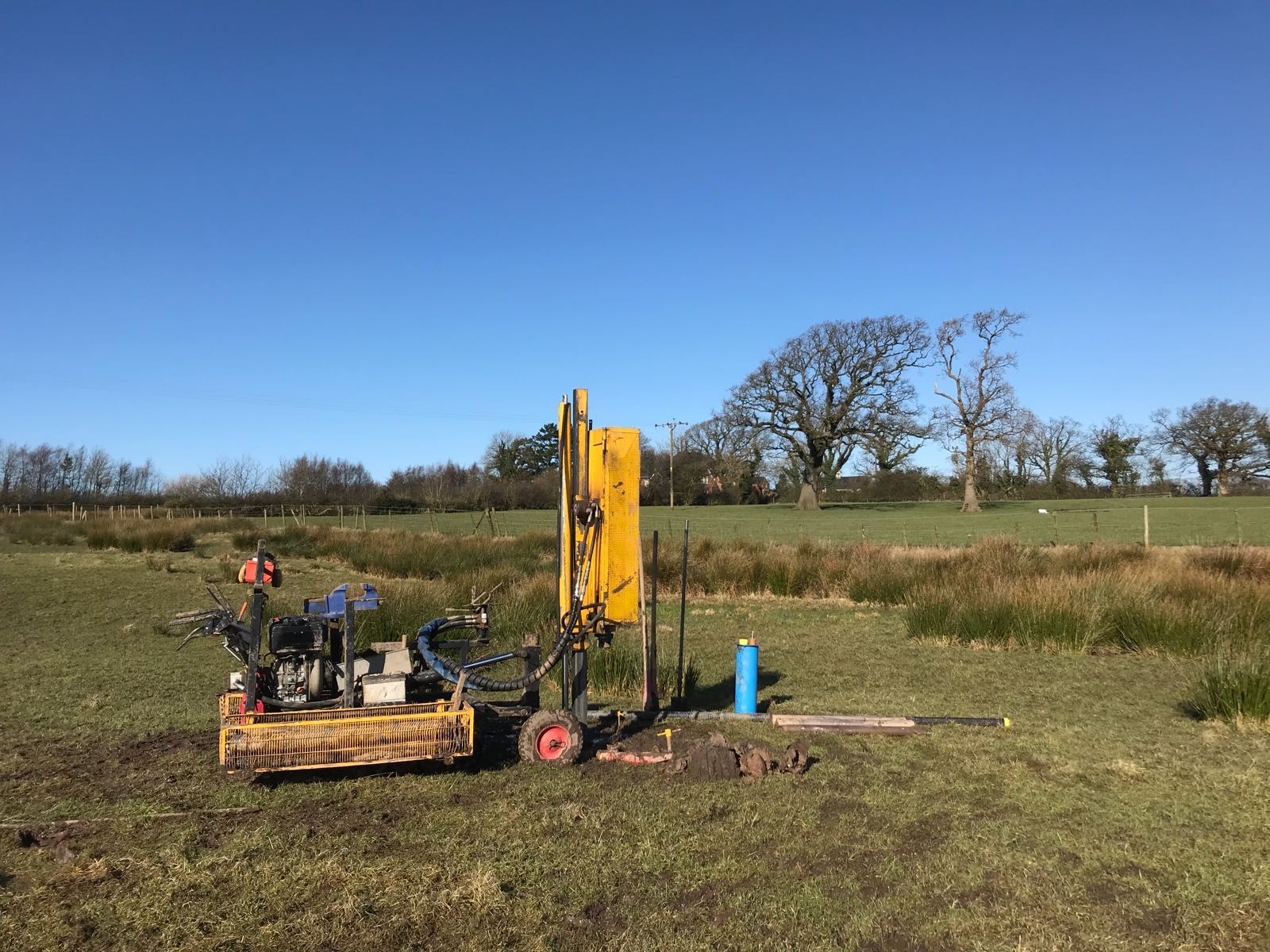
Sub Surface provides Dynamic Probing throughout the UK for Geotechnical and Geo-Environmental Ground Investigations to estimate soil strength parameters by correlating the results with other types of field tests (SPTs, CPTs) and/or for determining the depth of good ground or bedrock.
Dynamic Probing is a fast, low cost Ground Investigation method using one metre long sectional rods with a fitted cone, driven into the ground using a sliding hammer to determine the Penetration Rate (blows/mm) of the ground.
Typically, our Dynamic Probing Site Investigations follow on from Window Sampling Boreholes and use 35mm diameter rods with a 20cm2 area cone (50mm diameter and 90 degrees). The cone is driven into the ground with a 63.5kg rammer, dropped through 750mm. The penetration rate is determined by the number of blows over a distance of 100mm
When necessary, at every metre an additional rod is added and the torque required to turn the string of rods in the ground is also measured, providing an indication of friction on the rods.
Dynamic Probing is carried out in accordance with BS EN ISO 22476-2, BS EN 1997-2 and NA to BS EN 1997-2, on a small track mounted Window Sampling Rig.
Dynamic Probing Benefits
Apart from being a fast, low cost method of drilling to estimate soil strength parameters, dynamic probing can be an integral part of your Ground Investigation, for determining:
- The depth to suitable ground conditions
- The depth to rockhead where sudden variations may occur across the site
- Rapidly checking neighbouring positions
- Cavities
- Dissolution Features
Dynamic Probing Limitations
Dynamic Probing has a number of limitations such as unreliable results in soils containing cobbles and boulders and that the strata being testing cannot be identified. Therefore, at Sub Surface we recommend Dynamic Probing is only used alongside other Site Investigation methods, where the strata can be identified.
Whom to Contact
If you would like a quote for Dynamic Probing as part of your Ground Investigation or have any questions, please do not hesitate to contact your Regional Sub Surface Office.

